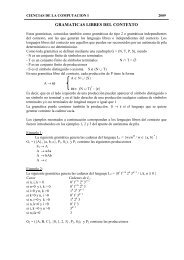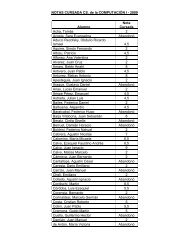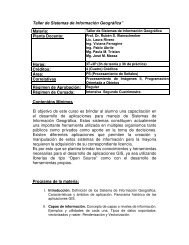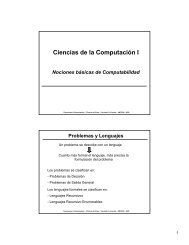Libro de Resúmenes / Book of Abstracts (Español/English)
Libro de Resúmenes / Book of Abstracts (Español/English)
Libro de Resúmenes / Book of Abstracts (Español/English)
Create successful ePaper yourself
Turn your PDF publications into a flip-book with our unique Google optimized e-Paper software.
Resumenes 64<br />
There exist a lot <strong>of</strong> examples <strong>of</strong> predator species which feed on some<br />
preferential age class <strong>of</strong> their prey. On the other hand, when the prey<br />
species is numerous it may <strong>de</strong>velop <strong>de</strong>fense mechanisms and consequently<br />
a lower predation rate is observed. The dynamical consequences <strong>of</strong> these<br />
two aspects -age structure prey and <strong>de</strong>fense mechanism -are consi<strong>de</strong>red in<br />
this chapter. It is analyzed a predator-prey mo<strong>de</strong>l, where the prey species<br />
has two age classes and it has a size-<strong>de</strong>pen<strong>de</strong>nt <strong>de</strong>fense mechanism. The<br />
analysis is based on a mo<strong>de</strong>l <strong>of</strong> the form<br />
dx x + y<br />
= x( γ (1 − ) − f( x, y) z−ν),<br />
dt K<br />
dy<br />
= νx−τy−g( y) z,<br />
dt<br />
dz<br />
= z( µ xf( x, y) + βg(<br />
y) −D),<br />
dt<br />
where the term x+y stands for the population <strong>of</strong> the prey, x is the<br />
reproductive class and y represents the ol<strong>de</strong>st and non-reproductive class.<br />
The <strong>de</strong>fense <strong>of</strong> the prey based on its size is simulated assuming that<br />
∂f(<br />
x, y)<br />
dg( y)/ y<br />
∂f(<br />
x, y)<br />
< 0, y < 0. Also, we assume that < 0, to introduce a<br />
∂x<br />
dy<br />
∂y<br />
kind <strong>of</strong> switching effect. So, if the ol<strong>de</strong>st class is large enough, it becomes<br />
the main energy source <strong>of</strong> predator food.<br />
The pattern <strong>of</strong> bifurcations <strong>of</strong> the system is explored when some<br />
parameters change. It is specially interesting the <strong>de</strong>pen<strong>de</strong>nce on the<br />
predator biomass conversion rate µ and the predator <strong>de</strong>ath rate D <strong>of</strong> the<br />
dynamical characteristic <strong>of</strong> the system. A survey <strong>of</strong> some literature is<br />
inclu<strong>de</strong>d in or<strong>de</strong>r to give a glance to the state <strong>of</strong> the art in this theme.



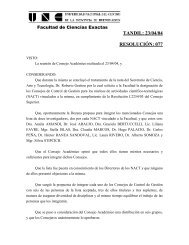
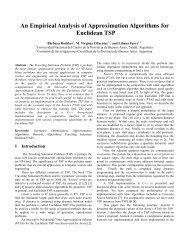
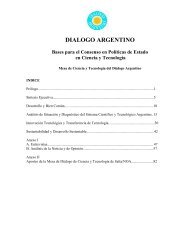
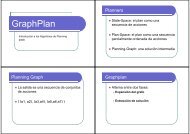

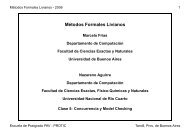
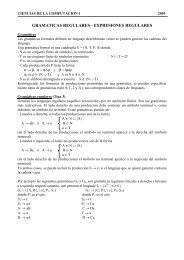

![Clase 13 [pdf]](https://img.yumpu.com/19616969/1/190x245/clase-13-pdf.jpg?quality=85)

